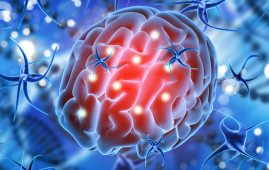

Researchers from Brown University and Western University have made ground-breaking strides toward understanding the underlying etiology of preeclampsia and developing a potential treatment.
Worldwide, the pregnancy complication affects up to 8% of pregnancies and is the greatest cause of maternal and fetal mortality due to preterm labor, placental problems, and oxygen deprivation.
A harmful protein called cis P-tau has been found in the blood and placenta of preeclampsia patients according to research performed by Western University’s Kun Ping Lu and Xiao Zhen Zhou and Brown University’s Surendra Sharma and Sukanta Jash.
According to a study that was published in Nature Communications, cis P-tau is a prominent “troublemaker” that contributes significantly to the development of the fatal complication known as preeclampsia.
“The root cause of preeclampsia has (so far) remained unknown, and without a known cause there has been no cure. Preterm delivery is the only life-saving measure,” said Lu, professor of biochemistry and oncology at Schulich School of Medicine & Dentistry. Lu is also a Western Research Chair in Biotherapeutics.
“Our study identifies cis P-tau as a crucial culprit and biomarker for preeclampsia. It can be used for early diagnosis of the complication and is a crucial therapeutic target,” said Sharma, professor of pediatrics (research) and professor of pathology and laboratory medicine (research) at Brown.
Leading preeclampsia researcher Sharma and his team discovered in 2016 that protein-related problems were the common underlying causes of preeclampsia and other disorders including Alzheimer’s. This study expands on that discovery.
Up until recently, cis P-tau was mostly linked to neurological conditions like Alzheimer’s disease, stroke, and traumatic brain injuries (TBI). After studying the role of tau protein in cancer and Alzheimer’s disease for decades, Lu and Zhou made this connection in 2015.
Clinical trials are currently being conducted on human patients with TBI and Alzheimer’s disease using an antibody that Zhou created in 2012 to only target the toxic protein while leaving its healthy counterpart unharmed. In the treatment of brain diseases, the antibody has produced encouraging results in both animal models and human cell cultures.
The possibility of using the same antibody as a potential preeclampsia treatment piqued the interest of the researchers. They discovered unexpected results when they tested the antibody in mouse models.
“In this study, we found the cis P-tau antibody efficiently depleted the toxic protein in the blood and placenta, and corrected all features associated with preeclampsia in mice. Clinical features of preeclampsia, like elevated blood pressure, excessive protein in urine and fetal growth restriction, among others, were eliminated and pregnancy was normal,” said Sharma.
An assay for the early identification of preeclampsia and treatments for the illness are being developed by Sharma and his team at Brown. He thinks they are getting closer to their objective as a result of the study’s findings.
Hispanic and Black women are more vulnerable
Preeclampsia, which disproportionately affects Black and Hispanic women, came to prominence earlier this year with the tragic death of American track and field champion Tori Bowie.
Bowie, 32, who won gold, silver, and bronze medals in the 2016 Olympics, was discovered dead in her bed on May 2, 2023, around eight months into her pregnancy. The consequences may have included eclampsia, a severe form of preeclampsia, according to the postmortem report.
“Research has shown that women of certain races have genes that could possibly lead to higher than average blood pressure levels, eventually creating conditions for preeclampsia during pregnancy. However, it’s also true that in many low socio-economic countries there’s no registry to record PE cases. So, its link to other environmental factors is still unclear,” said Sharma.
The brain and preeclampsia
Preeclampsia’s long-term effects and potential connections to brain health have also been clarified by recent studies.
“Preeclampsia presents immediate dangers to both the mother and fetus, but its long-term effects are less understood and still unfolding,” said Sharma. “Research has suggested a heightened risk of dementia later in life for both mothers who have experienced preeclampsia and their children.” However, the causal link between preeclampsia and dementia is not known.
According to the researchers, this latest study has identified a probable root cause of the intricate connection between preeclampsia and brain health.
“Our study adds another layer to this complexity. For the first time, we’ve identified significant levels of cis P-tau outside the brain in the placenta and blood of preeclampsia patients. This suggests a deeper connection between preeclampsia and brain-related issues,” said Jash, the lead author of the study.
The way our bodies react to stress is also becoming more and more apparent as a potential cause in the development of preeclampsia as studies dive deeper.
“Although genetics play a role, factors like stress could be an important piece of the puzzle. Understanding how stress and other environmental factors intersect with biological markers like cis P-tau may offer a more complete picture,” said Jash, assistant professor of molecular biology, cell biology and biochemistry (research) and pediatrics (research) at Brown.
Pin1 is a stress-response enzyme.
Pin1 turns out to be a stress-response enzyme, and Lu and Zhou made the ground-breaking discovery of it in 1996 and 1997. This particular protein in cells responds to stresses including toxins, physiological changes, or environmental challenges by becoming active or changing its behavior.
“Pin1 plays a pivotal role in keeping proteins, including the tau protein, in the functional shape during stress. When Pin1 becomes inactivated, it leads to the formation of a toxic, misshapen, variant of tau – cis P-tau,” said Zhou, associate professor, pathology and laboratory medicine at Schulich Medicine & Dentistry.
Pin1 is an intriguing critical actor in cancer signaling networks, activating a large number of cancer-causing proteins while simultaneously inhibiting a large number of cancer-suppressing ones. The majority of human cancers contain high quantities of it, and cancer stem cells—which are thought to be crucial for initiating and spreading tumors and are challenging to target with current therapies—are where it is most active.
“Essentially, when Pin1 is activated, it can lead to cancer. On the other hand, when there’s a decrease or deactivation in Pin1, it results in the formation of the toxic protein cis P-tau, which leads to memory loss in Alzheimer’s and after TBI or stroke. Now, we’ve uncovered its connection to preeclampsia as well,” said Zhou.
“The results have far-reaching implications. This could revolutionize how we understand and treat a range of conditions, from pregnancy-related issues to brain disorders,” said Lu.
In 2019, Sharma and Lu had first connected at Brown, where Lu had been asked to provide a presentation on his findings. The Western scholars and Brown formed a partnership after a stimulating session and a few shared meals.
“Science surprises us. I had never thought of working on finding a therapy for preeclampsia. It also shows that a collaboration can be transformative.”
more recommended stories
 Brain Pulsations Linked to High BMI
Brain Pulsations Linked to High BMIAccording to a new study from.
 Brain Age Estimation: EEG Advancements in Neurology
Brain Age Estimation: EEG Advancements in NeurologyTo estimate brain age using EEG.
 Unlocking Ketogenic Diet for Epilepsy Management
Unlocking Ketogenic Diet for Epilepsy ManagementExploring the Therapeutic Potential of Ketogenic.
 Senescence in Neurons: Findings
Senescence in Neurons: FindingsBased on a new study by.
 Balanced Diet Linked to Enhanced Brain Health
Balanced Diet Linked to Enhanced Brain HealthDiet and brain health are strongly.
 Acid-Reducing Drugs Linked to Higher Migraine Risk
Acid-Reducing Drugs Linked to Higher Migraine RiskIndividuals who utilize acid-reducing drugs may.
 Atrial Fibrillation in Young Adults: Increased Heart Failure and Stroke Risk
Atrial Fibrillation in Young Adults: Increased Heart Failure and Stroke RiskIn a recent study published in.
 Neurodegeneration Linked to Fibrin in Brain Injury
Neurodegeneration Linked to Fibrin in Brain InjuryThe health results for the approximately.
 DELiVR: Advancing Brain Cell Mapping with AI and VR
DELiVR: Advancing Brain Cell Mapping with AI and VRDELiVR is a novel AI-based method.
 Retinal Neurodegeneration in Parkinson’s Disease
Retinal Neurodegeneration in Parkinson’s DiseaseBy measuring the thickness of the.

Leave a Comment